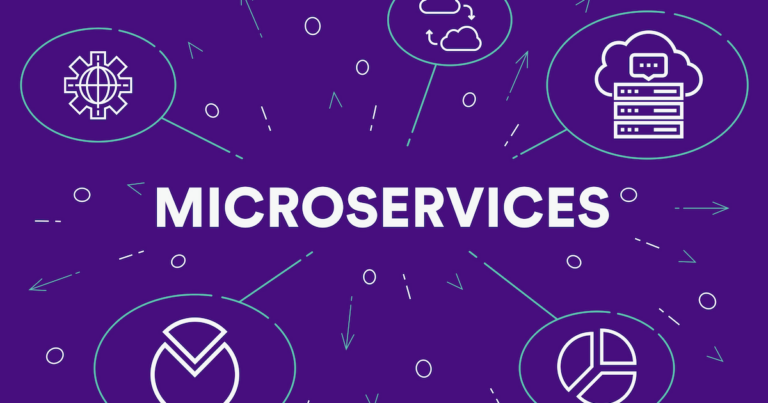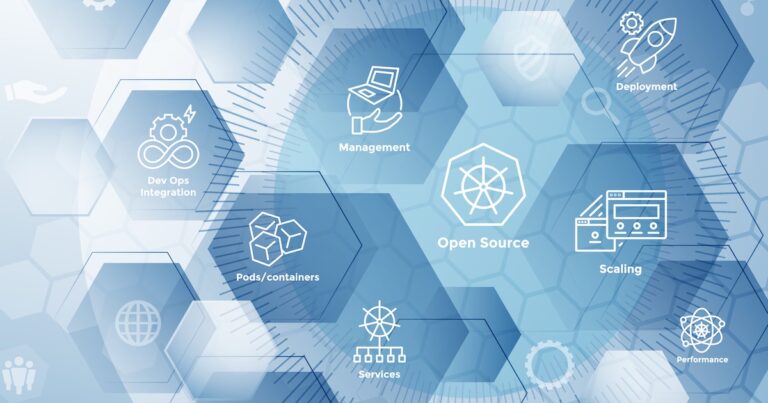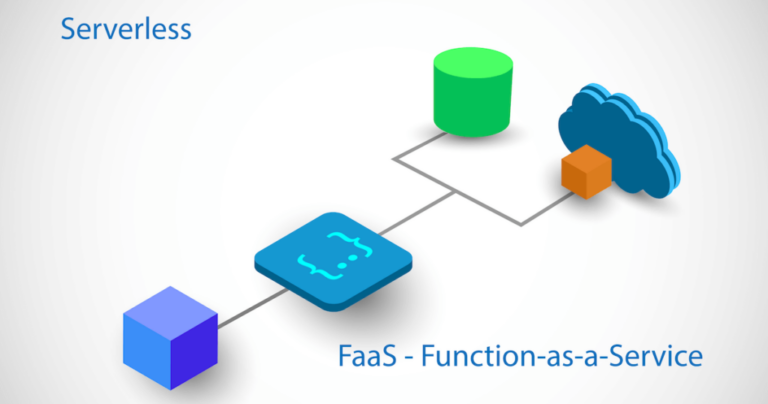New startups and enterprises that had realized the direction of the technology long ago developed their applications for the cloud.
Not all companies were so lucky, especially those running and operating businesses late over decades. However, they built their success decades ago on top of legacy technologies – monolithic applications with all components tightly coupled and nearly impossible to isolate. Architecture that becomes a nightmare later to manage and deploy on super-expensive hardware.
If you are working for an organization that refers to their core business application as a “black box” and where no one knows what goes on inside and most of the logic was never documented, leaving everyone unaware of what and how things happen from the moment the request enters the application until a response comes out. And then you’re asked to transform this business application into cloud applications; you may be in for a very long and bumpy ride.
Challenges With Monolith Applications
Monolith applications introduce sedimentary layers of features based on old software architecture patterns and principles. These applications are built using redundant logic translated into thousands of lines of code, not written in a single modern programming language.
Over time, new features and improvements added to the code complexity, making development more challenging – loading, compiling, and building times increased with each new update. On top of that, the monolith uses a large, single piece of software that grows continuously and runs on a single system to meet its compute, memory, storage, and networking needs. The hardware of such capability is not only complex and extremely expensive, but it is sometimes challenging to procure. There are many other challenges in the case of these tightly connected applications, such as:
- The monolith application runs as a single process, making scaling of the monolith’s individual features nearly impossible.
- It supports a hardcoded number of connections and operations internally.
- Inevitable downtime during upgrading, patching, or migrating monolith application
- The maintenance window should be planned well in advance as service disruptions are likely to impact customers.
- While third-party solutions reduce downtime for customers, this presents new challenges for system engineers. They have to keep all systems at the same patch level, which may introduce new potential licensing costs
Migrating To Microservices Architecture From Monolith
Microservices are loosely coupled components of an application, each of which performs a specific business function. All functions are grouped to make up the overall functionality of a native monolithic application.
Microservices can be deployed separately on different servers that are provisioned with fewer resources – only what each service needs, and the host system itself helps to calculate resource expenditure.
Microservices-based architecture aligns with event-driven architecture and service-oriented architecture (SOA) principles. Microservices break complex applications into small independent processes that communicate with each other via APIs over a network. APIs allow access to the same application or external, third-party services and other internal services of the application.
Modern programming languages are used to develop microservice and selected to best suit the type of service and business function. Developers experience great flexibility when matching microservices with specific hardware when needed, allowing deployment on cheap commodity hardware. As the overall application becomes modular, each microservice can be automated individually, either manually or through demand-based autoscaling. These are several other benefits that microservices provide to businesses, such as:
- Seamless upgrade and patching processes
- There is virtually no downtime, and no service disruption for customers as upgrades can be rolled out seamlessly.
- One service at a time, rather than having to recompile, rebuild and restart an entire monolithic application Go.
- Businesses can develop and roll out new features and updates much faster, in an agile approach, with separate teams focusing on different features, thus being more productive and cost-effective.
Microservices And Cloud Services
Microservices are not particularly relevant to cloud computing. Still, there are some important reasons why they are so often talked together – reasons that go beyond microservices, a popular architectural style for new applications, and cloud innovations as the cloud emerged as a popular hosting destination for applications.
A microservices architecture’s primary benefits are the usage and cost benefits associated with deploying and scaling components individually. While these benefits will be present to some extent with on-premises infrastructure, real cost optimization can be found by combining small, freely scalable components with on-demand, pay-per-use infrastructure.
Secondly, and perhaps more importantly, another advantage of microservices is that each component can adopt the stack best suited for its specific task. Stack propagation can lead to serious complexity and overhead when you manage it yourself. Still, management challenges can be dramatically reduced by consuming ancillary stacks in the form of cloud services. Put another way, while it is not impossible to roll your own microservices infrastructure, it is not advisable, especially when just getting started.
Architecting Microservices With Container
Containers are an application-centric way to deliver high-performance, scalable applications on any infrastructure of your choice. Containers are best suited for delivering microservices by providing a portable, isolated virtual environment for running applications without interference from other running applications. It also ensures a lightweight runtime environment encapsulated for application modules.
Microservices are lightweight applications packaged with dependencies to ensure that an application has everything it needs to run. However, containers encapsulate microservices and their dependencies but do not run them directly.
Containers run container images, which bundle the application with its runtime, libraries, and dependencies. It represents the source of the deployed container to provide a separate executable environment for the application. A single container image can be used to deploy applications to multiple platforms, such as workstations, virtual machines, public clouds, etc.
Containers promised a consistent software environment for developers, and testers, from development to production. Widespread support of containers ensured application portability from bare metal to virtual machines, but this time with multiple applications deployed on the same server, each running separately from the other in their execution environment, thus causing conflicts and errors and avoiding failures. Other characteristics of a containerized application environment are:
- High server usage
- Individual module scalability
- Resilience
- Interoperability
- Easy integration with automation tools
Container Orchestration: Managing Containers And Microservices Architecture At Scale
In a development (dev) environment, running containers on a single host may be a suitable option for developing and testing applications. But, when migrating to quality assurance (QA) and production environments, this is no longer a viable option as applications and services need to meet specific requirements:
- Fault tolerance
- Scalability on demand
- Optimum resource utilization
- Auto-discovery to automatically discover and communicate with each other
- Accessibility from the outside world
- Seamless updates/rollbacks with no downtime.
This is where container orchestration plays a big role. A container orchestration tool groups systems together to form clusters where the deployment and management of containers are largely automated while meeting the requirements outlined above.
How Does Container Orchestration Works?
One can also manually maintain a few containers or write scripts to manage the lifecycle of dozens of containers. But things get complicated and cumbersome when the number of containers increases. In an enterprise environment, the number of containers with different specifications can be hundreds or even thousands. Orchestrators make things a lot easier here, especially when managing hundreds and thousands of containers running on a global infrastructure. A container orchestrator can:
- Group hosts together when creating a cluster.
- Schedule containers to run on hosts in the cluster based on the availability of resources
- Enables containers in the cluster to communicate with each other regardless of where they are deployed in the cluster
- Bind containers and storage resources
- Groupsets of similar containers and create an interface between container and client to facilitate access to containerized applications by forcing them to load-balancing construction.
- Manage and optimize resource usage
- Allow implementation of policies for secure access to applications running inside containers.
With all these configurable yet flexible features, container orchestrators are an obvious choice for managing large-scale containerized applications.
Kubernetes: Container Orchestration Framework To Automate Deployment & Monitoring
Kubernetes is one of the most sought-after container orchestration tools available today. It can be deployed on a workstation, inside a company’s data center, with or without an isolation layer such as a local hypervisor or container runtime, in the cloud on an AWS EC2 instance, on GCE VMs, DigitalOcean Droplets, OpenStack, etc. Turnkey solutions are allowing the installation of Kubernetes clusters, with just a few commands, on top of cloud infrastructure-as-a-service. In addition, there is Managed Container Orchestration as a Service, specifically Managed Kubernetes as a Service Solution, offered and hosted by leading cloud providers including AKS, EKS, GKE, DigitalOcean, Oracle Container Engine for Kubernetes.
With all such powerful features and support for hybrid and multi-cloud environments, Kubernetes ensures smooth portability for microservices and containers, which greatly accelerates release times. This open-source solution helps businesses improve their application administration in diverse IT environments in a number of ways, such as:
1. Reducing Development And Release Time Frames
Kubernetes greatly simplifies development, release, and deployment processes: for example, it enables container integration or facilitates administration of access to storage resources from different providers. Furthermore, in scenarios where the architecture is based on microservices, the application is divided into functional units that communicate via APIs. Thus, the development team can be divided into smaller groups specializing in a single facility. This allows organization IT teams to work with greater focus and efficiency, accelerating release deadlines.
2. Enhanced Software Scalability And Availability
Kubernetes is able to scale up or down based on the emergent needs of the organization, facilitating dynamic management of peak applications and underlying infrastructure resources. It uses native autoscaling APIs, such as HPA and VPA, to dynamically request new HW resources to be allocated to the infrastructure serving the service to ensure the same performance. Once the emergency is over, Kubernetes will deplete resources no longer needed, avoiding waste.
3. Flexibility In Multi-Cloud Environments
Containerization and Kubernetes – one of the biggest advantages offered by the solution – make it possible to realize the promises of new hybrid and multi-cloud environments, operating in any public and private applications guarantees without environmental, functional, or performance losses. Thus the risk of lock-in is also reduced.
4. Cloud Migration Path
Lastly, Kubernetes makes it possible to simplify and accelerate the migration of applications from an on-premises environment to a public or private cloud offered by any provider. Applications can be migrated to the cloud by adopting various methods:
- Simple transfer of the application, without any coding changes (lift and shift);
- Minimal changes are required to allow the application to work in the new environment (re-platforming).
- Extensive rewriting of application structure and functionality (refactoring).
A recommended approach is to re-platform on an on-premises system (where it’s easier), using the new containerized architecture and Kubernetes. So applications are migrated to a cloud environment where a single instance of Kubernetes is running. Here, the solution can be optimized, with more extensive changes made to the code.
To Sum Up
Microservices have provided enterprises with monolith applications a path to be faster and more competitive with their counterparts including cloud-based starts ups. It provides businesses improved business functionality, better data security & compliance compatibility, faster time to market, scalability, and resiliency. When employed with the cloud – offers better cost management for developing and running enterprise applications. But one shouldn’t do microservices without DevOps or Cloud Services.
Building out microservices means building out distributed systems. Distributed systems are hard and complex to manage. Attempting to do microservices without either a proper deployment and monitoring automation or managed cloud services to support sprawling, heterogenous infrastructure means asking for unnecessary trouble. You must save yourself the trouble so you can spend your time worrying about the state with Kubernetes.
Although a challenging process, moving to microservices and Kubernetes is a rewarding journey especially once a business starts to see growth and success delivered by distributing and packaging applications into microservices and containers to leverage hybrid and multi-cloud environments.




